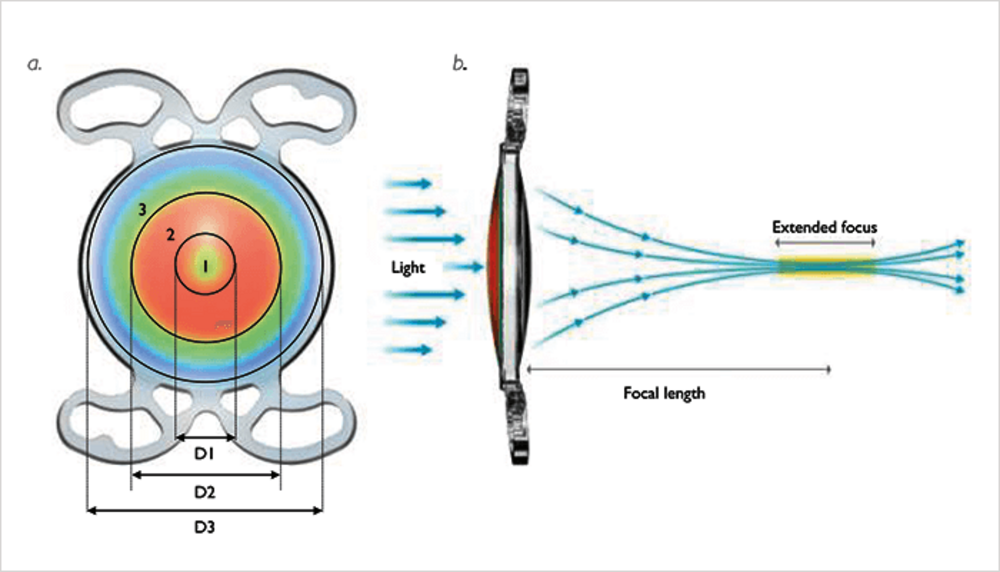Another paper from the research group at the David J Apple Center for Vision Research has been accepted for publication in the BMC Ophthalmology journal.
Functional results and photic phenomena with new extended-depth-of-focus intraocular Lens Bert C. Giers, Ramin Khoramnia, Dorottya Varadi, Hannah Wallek, Hyeck-Soo Son, Mary S. Attia and Gerd U. Auffarth BMC Ophthalmology (2019) 19:197 https://doi.org/10.1186/s12886-019-1201-3
Mini Well
This reports on cataract patients’ visual function after getting treated with the Mini WELL Ready EDOF intraocular lens. We’d already studied the lens at the David J Apple International Laboratory for Ocular Pathology. The Mini WELL Ready has an innovative optical design, and since we got great laboratory results, this prompted a clinical study with patients at the Heidelberg University Eye Hospital. Then later we joined a multicenter study at several sites across Europe, with Prof. Auffarth as Chief investigator.
Today, in this new report, we present the results of the first clinical study. (The multicenter paper is currently under review by the investigators.)
In the zones
 Image of the MINI WELL zones – courtesy of Dr. Zuppardo, SIFI
Image of the MINI WELL zones – courtesy of Dr. Zuppardo, SIFI
MINI WELL Ready is a preloaded, single-piece hydrophilic acrylic IOL with a hydrophobic surface. The biconvex optic has three annuli, an outer monofocal zone and two inner zones with spherical aberrations of opposite signs. The innermost zone, has a positive spherical aberration, creating the intermediate focus. The middle zone has a negative spherical aberration, contributing to near focus. The outermost zone is a monofocal optic that is responsible for creating the far focus. The lens features an equivalent addition of + 3.0D corresponding to a spectacle plane addition of + 2.4D.
Fourteen cataract patients enrolled in the study and received the lens in each eye. Thus we assessed 28 bilateral implantations for uncorrected (UDVA) and corrected (CDVA) distance visual acuities; uncorrected (UNVA), distance-corrected (DCNVA) and best-corrected (CNVA) near visual acuities; and uncorrected (UIVA) and distance-corrected (DCIVA) intermediate visual acuities- as well as binocular defocus curves. Photopic and mesopic contrast sensitivity was recorded. We used an electronic reading desk to assess reading distance both at fixed distances and at the patient’s preferred near and intermediate distances. Visual symptoms were assessed with a halo and glare simulator. Finally, the patients answered a questionnaire about their quality of life after the operation.
Our Results
We found,
· Patients reported a high rate of spectacle independence and satisfaction in everyday life. Furthermore, they reported little to no dysphotopsia.
· The Median postoperative monocular UDVA was 0.13logMAR (range−0.08 to 0.42logMAR), median CDVA was−0.01logMAR (range−0.20 to 0.22logMAR), median UIVA at 80 cm was−0.05logMAR (range−0.18 to 0.58logMAR) and median UNVA at 40 cm was 0.14logMAR (range−0.10 to 0.64logMAR).
· Binocular uncorrected reading acuity was0.10logMAR at 40 cm and 0.11logMAR at 80 cm.
· Patients preferred a median intermediate reading distance of 62.8 cm over the predetermined 80 cm, which allowed them to read smaller letter size but did not improve reading acuity.
Prof Gerd Auffarth conducted all the operations and was very pleased with the results. It is very satisfying when one sees laboratory results bourne out in a clinical setting. The Mini WELL Ready EDOF IOL does indeed provide good postoperative functional results at far and intermediate distances and improved the visual and reading acuity at reading distance. Most importantly, the lens caused little to no dysphotopsia.
We, the authors, wish to share this work and the publisher has made the paper freely accessed by anyone immediately on publication.
Link: https://rdcu.be/bPNTX
You are welcome to read or download the paper for your own archive. No registration or fee is required.
 Hyeck-Soo Son
Hyeck-Soo Son 
 EDOF wavelength dependence
EDOF wavelength dependence